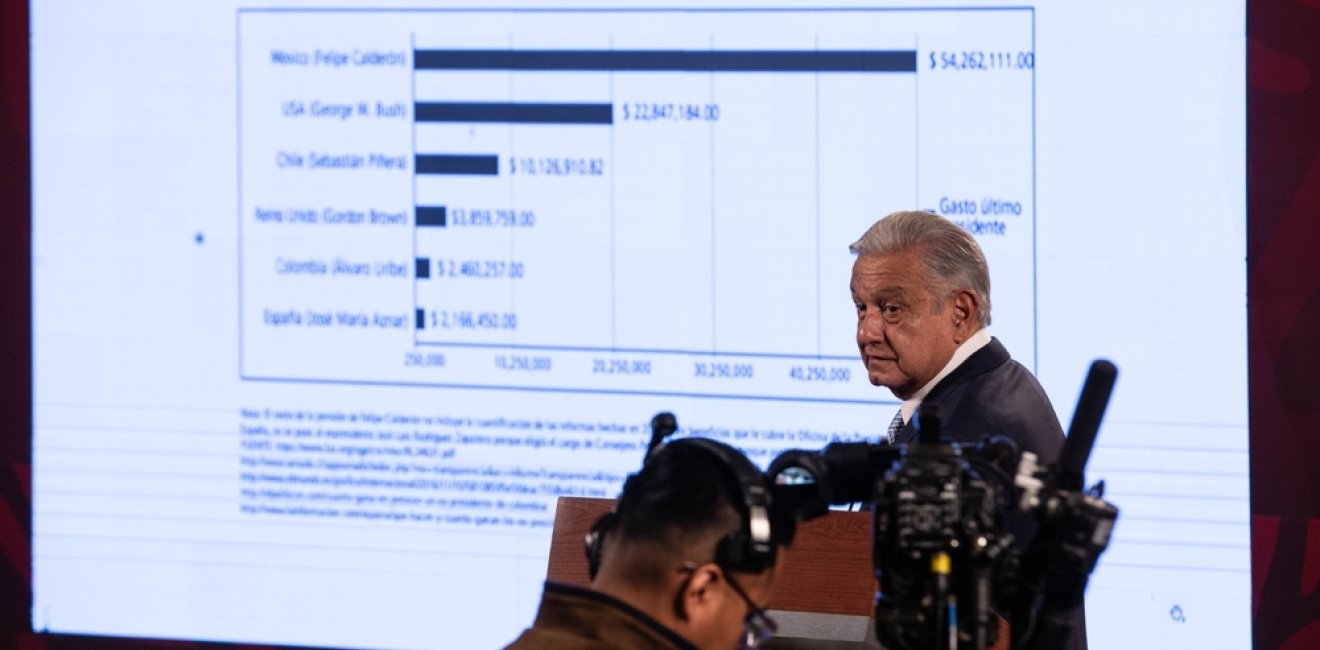Mexico’s economy is at a crossroads. On June 2, Mexican voters elected a new president. Claudia Sheinbaum, the former mayor of Mexico City, and a loyal ally of outgoing president Andres Manuel Lopez Obrador, will start her six-year term in office at a time of immense challenges and opportunities for Mexico’s economy. Two of the biggest issues for Mexico’s economy are Mexico’s longstanding security problems and rapidly evolving trend of foreign investment in “nearshoring.” Over the last few years, the most pressing security risk for foreign companies in Mexico has been the phenomenon of violent cargo truck hijacking on major highways.
In order to maximize Mexico’s economic potential, president-elect Sheinbaum will need to take steps to improve highway security and protect manufacturing companies from the risk of cargo truck hijacking. If she wants to fully leverage the benefits of cross-border commerce and investment, she should also advocate for an update the country’s outdated regulations regarding cargo liability in order to better protect merchandise and bring local freight carriers’ obligations in line with U.S. standards.
The stakes are high. Yes, Mexico’s economy grew by 3.1% in 2023.
Overall, however, Mexico’s economy grew by an average of just 0.8% during the first five years of Lopez Obrador’s government. This is the worst growth Mexico has experienced during any presidential administration since Mexico opened its economy and entered the North American Free Trade Agreement in 1994. Mexico’s per capita GDP is actually 1.5% lower now than when Lopez Obrador first entered office.
Nearshoring has been a bright spot for Mexico’s economy. Mexico logged a record $36.1 billion in foreign direct investment in 2023. Most of this money is going into Mexico’s manufacturing sector. In 2024, companies including Wal-Mart, Amazon, Volkswagen, and DHL have all announced major new investment plans for Mexico. However, while longtime nearshoring companies are doubling down on their investments in Mexico, many first-time investors considering international expansion are still hesitant to invest in new operations south of the U.S. border. Trends of investment in Mexico are encouraging but are still woefully below the game-changing levels that would be possible if Mexico could entice more first-time investors to make a move.
Sheinbaum will need to make sure that security problems do not dampen enthusiasm for nearshoring investment in Mexico. Over the last five years, Mexico recorded a historic level of violent crime. Foreign executives are taking note of the fact that Mexico is now considered to be the worst hotspot in the entire world for violent cargo truck hijacking.
During Lopez Obrador’s first five years in office, Mexico recorded 84,963 cargo truck hijacking incidents. Mexico’s CONCAMIN business chamber estimates that cargo loss due to violent highway robbery costs businesses in Mexico more than $415 million per year.
According to estimates from business chambers in Mexico, on average, fifty cargo trucks hijacked every day in Mexico. On April 9, police in Estado de Mexico on the outskirts of Mexico City recovered a stolen cargo truckcarrying a shipment of cigarettes worth over three quarters of million dollars. On April 16, police in the same area recovered another stolen truck and seized a scrambling device the hijackers used to prevent the truck’s driver from reporting the robbery or requesting assistance.
According to Reliance Partners’ Cargo Truck Hijacking Data Portal, which compiles official data published by Mexico’s federal government, Mexico recorded 7,862 hijackings in 2023, up 3% from 2022. Companies including Wal-Mart, Ford, Danone, Chevrolet, Apple and Amazon have all experienced cargo truck hijacking incidents in Mexico.
One issue is the fact that Mexico’s regulations regarding cargo insurance have lagged behind the benchmark set by the U.S., which holds carriers responsible for losses up to $1 million for cargo lost or damaged during transit.
Companies shipping goods through Mexico, to or from the U.S., may be surprised to learn that Mexican carriers are only liable for around ten cents per pound of cargo that is lost, stolen, or damaged during shipment through Mexico. Especially for companies investing in Mexico’s electronics, automotive, and aerospace sectors, this level of liability leaves foreign companies dangerously exposed to the risk of cargo theft.
Foreign executives shepherding valuable cargo through Mexico can try to mitigate risk by hiring armed guards to accompany their trucks, coordinating passage through high-risk sections of highway with caravans of trucks accompanied by National Guard patrols, by investing in GPS tracking devices, and by seeking out cross-border insurance solutions that protect cargo on both sides of the border.
Cargo risk and gaps in insurance coverage are a potential blind spot for many foreign executives considering investing in manufacturing facilities in Mexico. The current status quo in Mexico is like the Wild West. The low levels of liability cargo carriers are obligated to cover under current regulations leave foreign companies dangerously exposed to risk of cargo loss. Given the current frequency of cargo truck hijacking in Mexico, this risk is a relevant, daily operational risk, not a theoretical “black swan” potential risk. Unfortunately, right now the overwhelming majority of foreign executives planning logistics routes in Mexico are not even aware of the gaps in insurance coverage that exist in Mexico until one of their trucks is hijacked.
Under Mexico’s outdated regulations, in many cases freight carriers are only responsible for paying out a sum of $221 per ton of cargo lost. Under the existing rules, companies moving goods through Mexico are entitled to a payout of $4420 in compensation for a stolen 20-ton cargo load. Regulations regarding cargo liability insurance have not been updated since 1993 and have fallen out of sync with the volume and value of cargo moving on Mexico’s highways. The nominal value of Mexico’s exports has increased tenfold over the last three decades. In 1993, Mexico exported just $43 billion worth of goods to the U.S. In 2023, Mexico exported $476 billion dollars of goods and services to the U.S. More than 20,000 trucks now cross the U.S. border from Mexico every day. In total, more than 7.5 million trucks crossed the U.S. border from Mexico in 2023, up from 1.8 million in 1993.
Too many US-based cross border shippers operating in Mexico advise that they offer “self-insurance.” But, in practice this can mean that companies shipping goods are left with inadequate protection when a truck carrying hundreds of thousands of dollars’ worth of goods goes missing.
Cross-border manufacturing and collaboration between the U.S. and Mexico has been one of the great success stories of the 21st century. If president-elect Sheinbaum wants to maximize the ongoing growth of nearshoring she should follow through on her campaign trail promises to improve highway security and reduce the risk of cargo truck hijacking. Sheinbaum should also consider spearheading an update to Mexico’s three-decade-old cargo liability regulations, and bring Mexico’s cargo liability framework in line with U.S. standards.
Author


Mexico Institute
The Mexico Institute seeks to improve understanding, communication, and cooperation between Mexico and the United States by promoting original research, encouraging public discussion, and proposing policy options for enhancing the bilateral relationship. A binational Advisory Board, chaired by Luis Téllez and Earl Anthony Wayne, oversees the work of the Mexico Institute. Read more





